
The hanging indent is a classic staple of word processing software. One such platform is Google Docs, which is completely free to start using. Google Docs is packed with all kinds of features and settings, to the point where some of its more basic capabilities are overlooked. Sure, there are plenty of interface elements you may never use, but something as useful as the hanging indent option should receive some kind of limelight.
And we’re just the publication to power on the neon bulbs of discovery! We’ve written up a guide to get you adding hanging indents in Google Docs in no time.
How to create a hanging indent in Google Docs
Step 1: Head into Google Docs to start. You can access Docs in several ways, but the easiest method is to use the web app. Log in if necessary, and find the document that you want to apply hanging indents to.
Navigate to the left part of your document, and place the cursor at the beginning of the paragraph you want to indent.
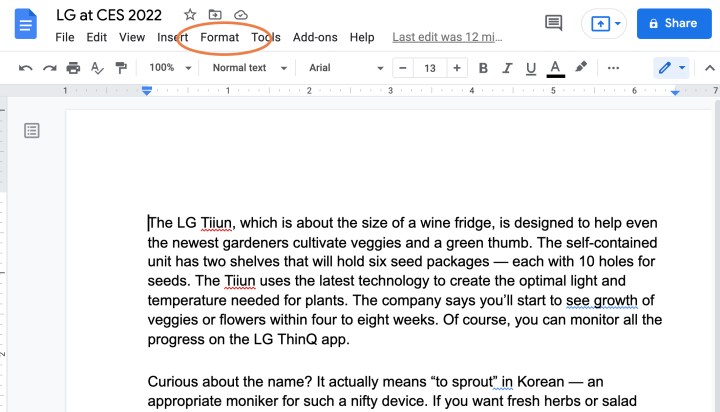
Step 2: Navigate to the Google Docs menu at the top and click on the Format drop-down menu.
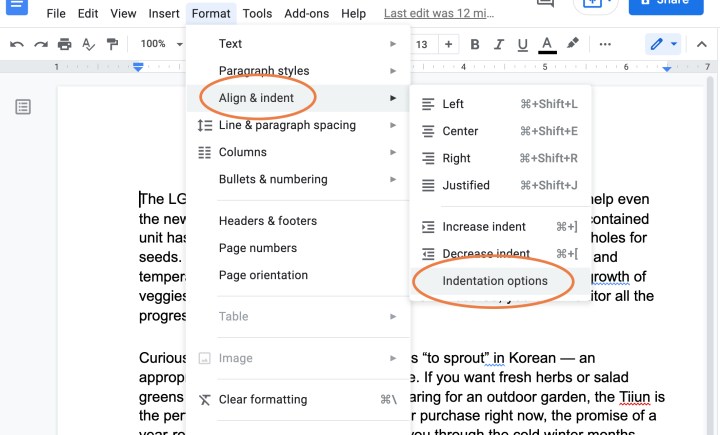
Step 3: In the Format menu, go to Align & Indent. When this menu pops open, choose Indentation Options.
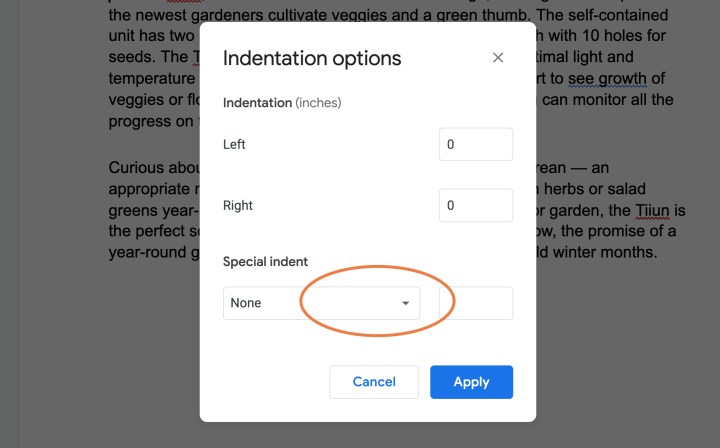
Step 4: Indentation Options will open a new window where you can customize an indentation. Go to the Special indent section, which should currently say None.
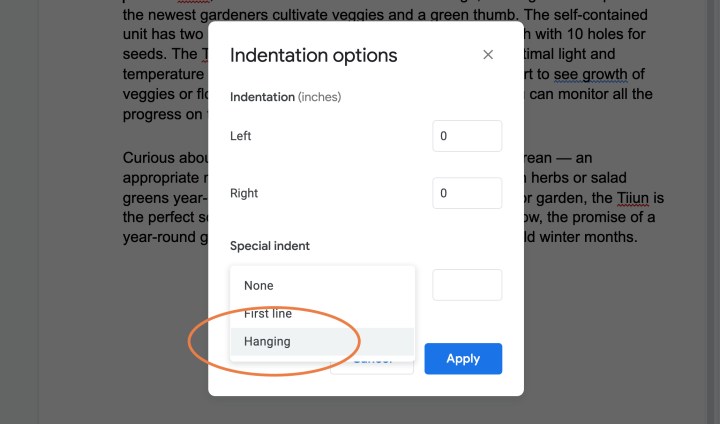
Step 5: Select the menu and choose Hanging.

Step 6: Now you will see a number on the right, noting how long the hanging indent will be. It should be set to the traditional 0.5 inch, but you can adjust this if you want to.
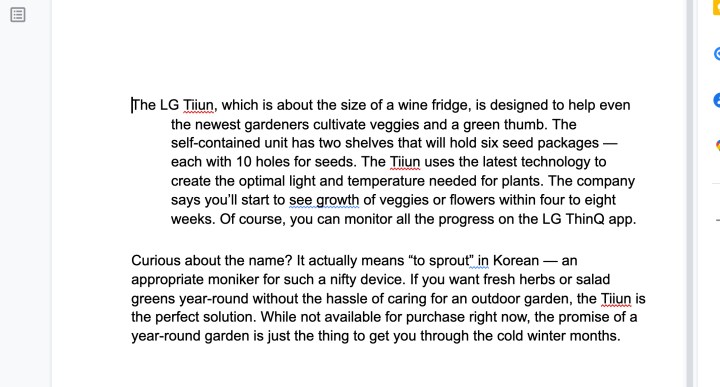
Step 7: When finished, select Apply. The paragraph you were on should now have a hanging indent.
Step 8: If you have multiple paragraphs or sections to indent all at once, it’s no problem. Just highlight them all before using the steps above. Then the hanging indent will automatically apply to the entire highlighted section.



